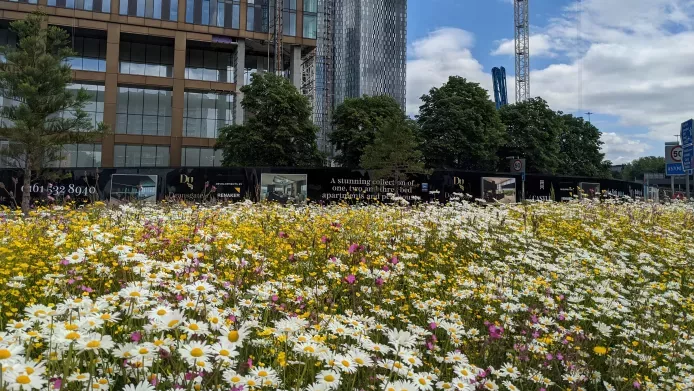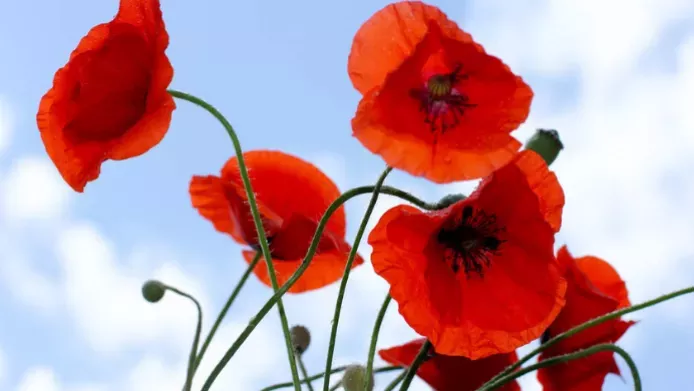Spring is a time for new beginnings, what better way to celebrate the season than with the blooming of UK native spring bulbs? Find out what bulbs you should be looking out for, where you can find them and when they appear.
UK native spring bulbs are a valuable part of our natural heritage. As well as bringing beauty to our gardens and woodlands, they play a vital role in the ecosystem:
-
They provide food and shelter for a variety of animals, including birds, mammals, and nectar for early-emerging insects
-
They help to improve soil quality and prevent erosion
Types of UK native spring bulbs
50% of the global population of bluebells is found in the UK. These delicate blue flowers are a familiar but fleeting sight in many British woodlands. They grow in large colonies and their sweet scent can fill the air on a spring morning. While the first bluebells may flower there in late March, the best time to see them is towards the end of their flowering period in April and May.
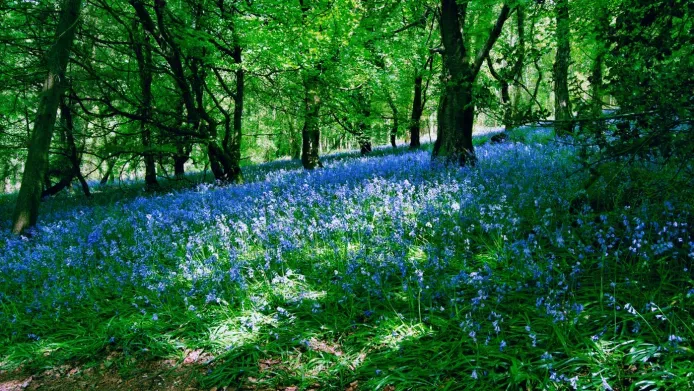
Bluebells (Hyacinthoides non-scripta) are a protected species, so it is illegal to pick or dig them up. Spanish bluebells (Hyacinthoides hispanica) are not a UK native species but are able to hybridise (Hyacinthoides x massartiana) with UK native bluebells. If you are struggling to distinguish the two varieties, Spanish bluebells are larger and unscented.
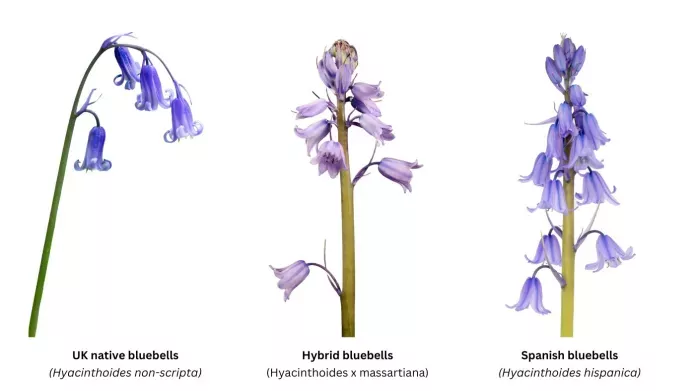
These white flowers with yellow centers are another common sight in UK woodlands. They prefer shady areas, and their delicate petals often flutter in the breeze. The best time to see these plants is when they are flowering between March and May.
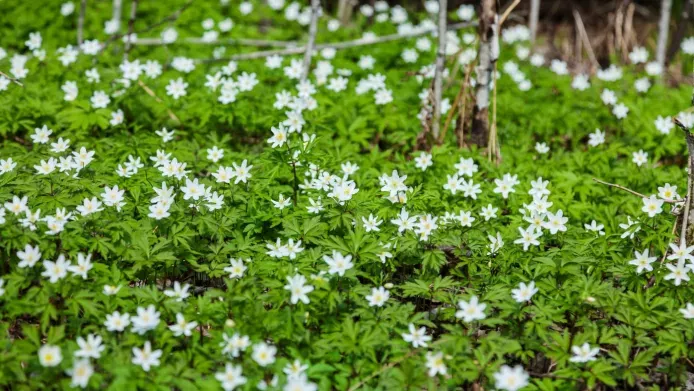
This purple chequered flower is described as 'possibly native' and is a protected plant in the UK, meaning it is illegal to pick them. Usually seen in damp meadows, woodlands, and heathlands, it is a small plant that grows to about 12 inches tall. The best time to see them is between April and May.
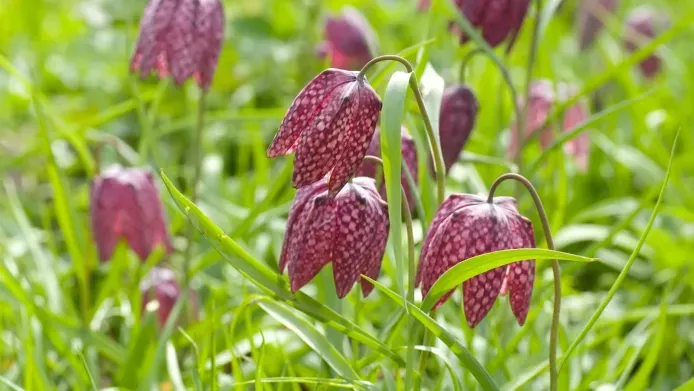
These bright yellow flowers are one of the first to appear in the spring. They grow in damp but sunny spots, and their cheerful colour is a welcome sight after a long winter. The best time to see these flowers is between February to April.
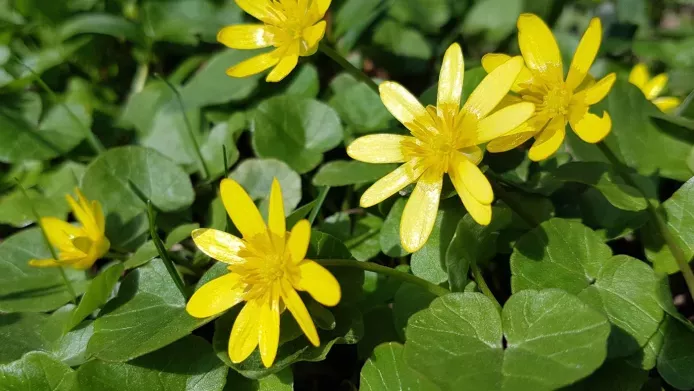
These garlic-scented flowers are not only beautiful, but they are also edible, their leaves can be used in salads or cooked like spinach. Ramsons are a common sight in the UK, found in woodlands, hedgerows, and other shady areas. It is a particularly popular plant in spring when its leaves emerge and fill the air with a strong garlicky smell. The best time to see Ramsons white flowers is between April and June.
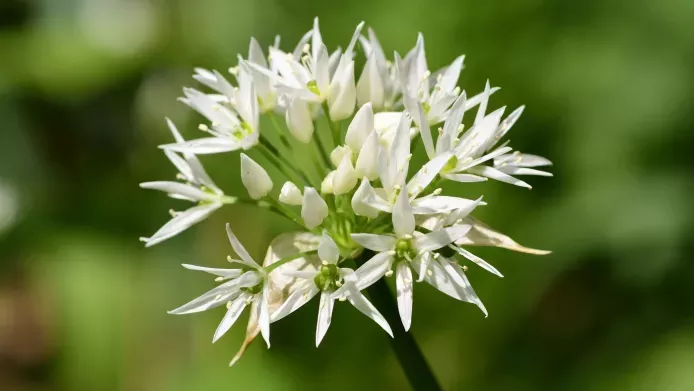
The UK's only native daffodil is a short-lived perennial regularly spotted in towns and cities as well as woodlands, meadows, and heathland. Despite being a common sight, they are a threatened species, and their numbers have declined in recent years due to habitat loss, over-picking, and the spread of invasive species. The best time to see these yellow and cream, trumpeted flowers is between February and April.
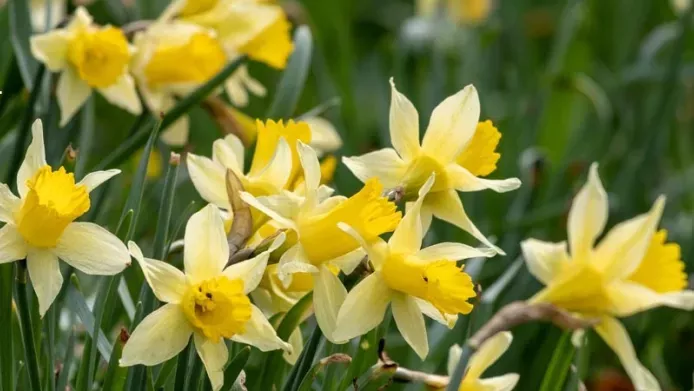
Growing UK native bulbs
If you are looking to add some beauty and interest to your garden, consider planting some native spring bulbs. They are easy to care for and will provide you with years of enjoyment.
How to plant them:
- UK native spring bulbs are best planted in the autumn, about six weeks before the first frost. Choose a spot in your garden that gets full sun or partial shade. The soil should be well-drained but moist.
- To plant the bulbs, dig a hole that is twice as deep as the bulb is tall. Place the bulb in the hole with the pointed end facing down. Fill the hole with soil and water well.
- UK native spring bulbs will naturalize over time, so you may not need to replant them every year. However, if you want to increase the number of bulbs in your garden, you can divide them every few years.

How to maintain your bulbs:
UK native spring bulbs are low-maintenance plants once they are established and will need little care. However, there are a few things you can do to help them thrive:
-
Water them regularly, especially during dry periods.
-
Mulch around the plants to help retain moisture and suppress weeds.
-
Fertilize them in the spring with a balanced fertilizer.
Some of the best places to see UK native spring bulbs
If you want to get outside, explore and find great examples of spring bulbs in bloom, below are suggested locations where you may see them:
-
Ashdown Forest, East Sussex
-
Blenheim Palace, Oxfordshire
-
The Breckland, East Anglia
-
Clumber Park, Nottinghamshire
-
The Chiltern Hills, Buckinghamshire
-
Exmoor National Park, Devon
-
The Garden of England, Kent
-
The Lake District, Cumbria
-
The New Forest, Hampshire
-
The Peak District, Derbyshire
-
The Royal Botanic Gardens, Kew, London
-
Wakehurst, West Sussex
-
Richmond Park, London
-
Sherwood Forest, Nottinghamshire
- Castlewellan Forest Park, County Down
-
Glenariff Forest Park, County Antrim
-
The Sperrin Mountains, County Tyrone
-
Tollymore Forest Park, County Down
-
Abernethy Forest, Perthshire
-
The Cairngorms, Moray
-
Dundrennan Abbey, Dumfries and Galloway
-
Glen Affric, Highlands
-
Loch Lomond and The Trossachs National Park
-
Royal Botanic Gardens Edinburgh and Benmore, Dawyck
-
The Scottish Borders
- Bannau Brycheiniog, Powys
- Betws-y-Coed, Conwy
- Castell Coch, Cardiff
- The Gower Peninsula, Swansea
- Snowdonia National Park, Gwynedd
- The Wye Valley, Monmouthshire
Looking to learn more?
